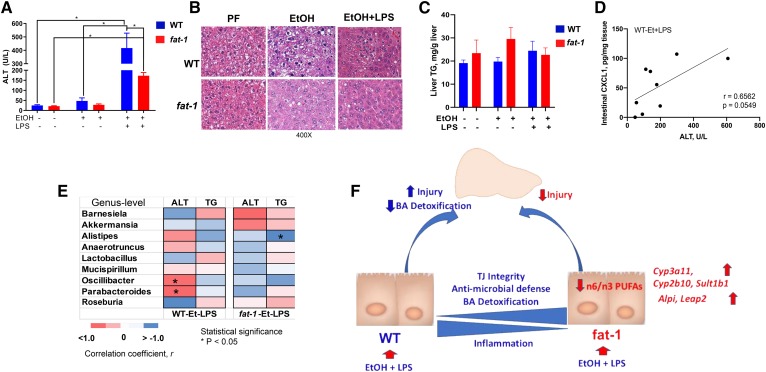Fig. 8.
Decreased ω-6:ω-3 PUFA ratio resulted in the improvement of liver injury associated with EtOH and LPS administration. Serum ALT levels (A), representative H&E-stained liver sections (400×) (B), liver TGs (C), correlation between intestinal CXCL1 protein expression and ALT (D), and heat map to illustrate Spearman correlations of the relative abundance of microbiome at the genus levels and parameters of liver injury WT and fat-1 mice in the EtOH+LPS group (n = 5, statistical significance indicated as *P < 0.05) (E). The r values are represented by gradient colors, where red and blue cells indicate positive and negative correlations, respectively; *P < 0.05. F: Model showing potential mechanism by which decreased tissue ω-6 PUFA and increased ω-3 PUFA results in a specific changes in intestinal homeostasis, the gut microbiota, and BA metabolism that coordinate to ameliorate liver injury in mice chronically fed EtOH and challenged with LPS. A–E: n = 3–12 mice per group.

